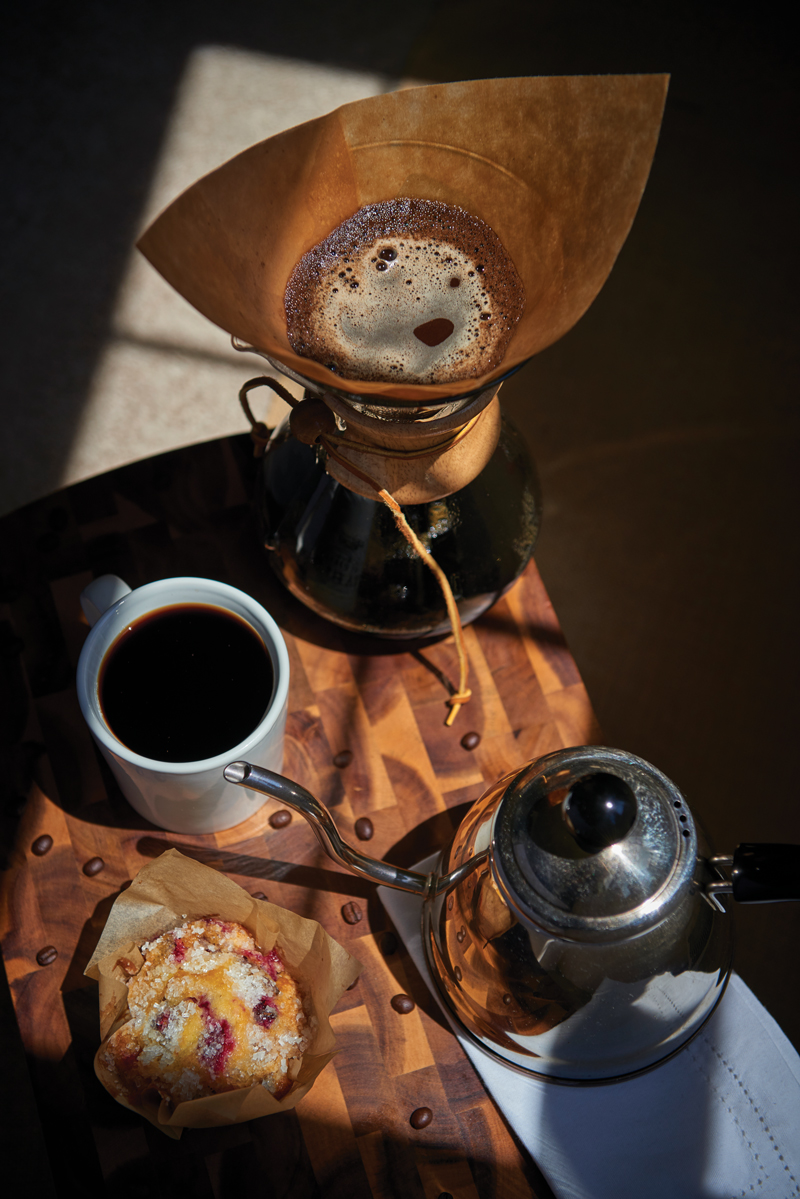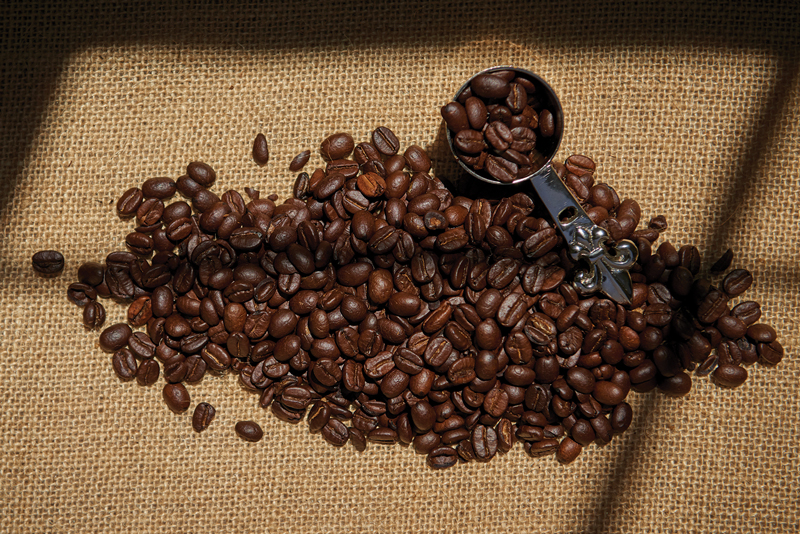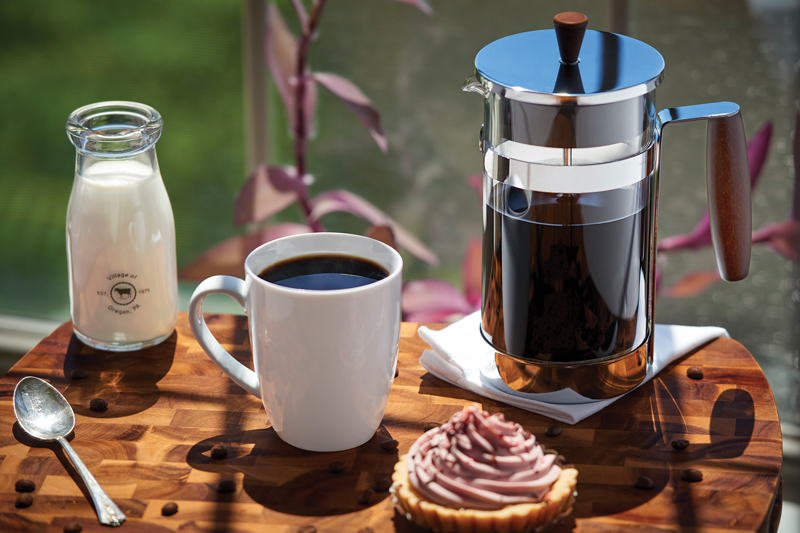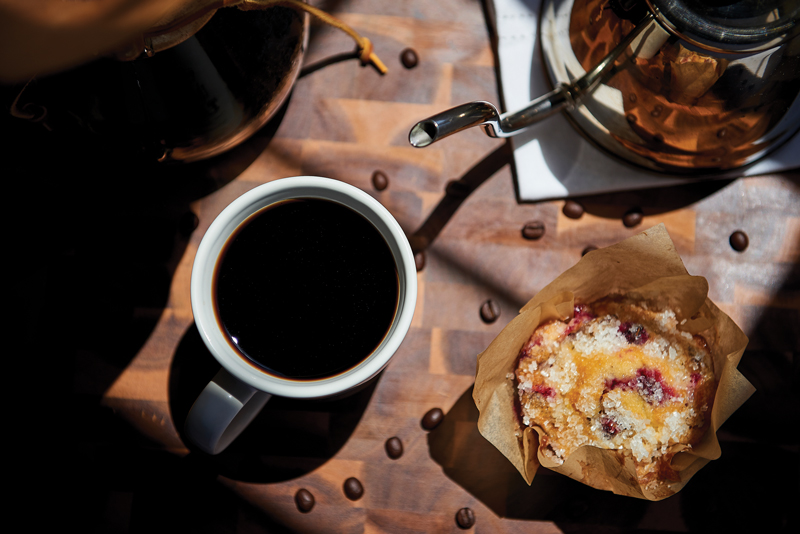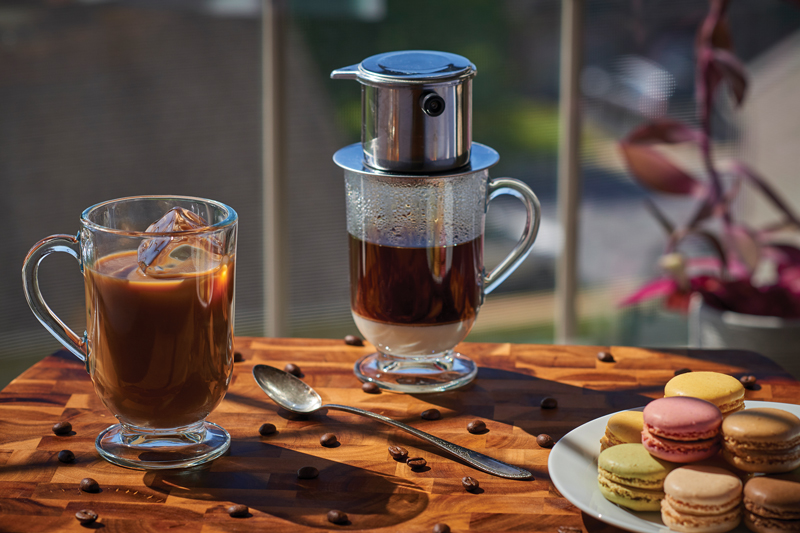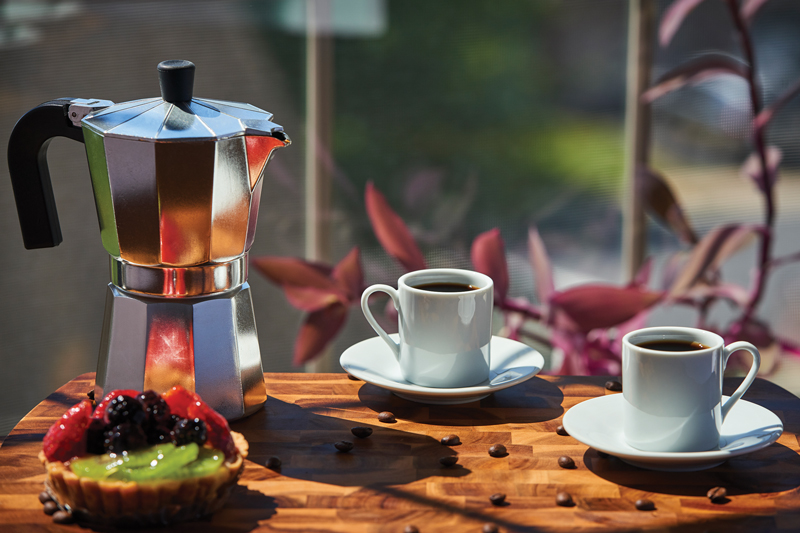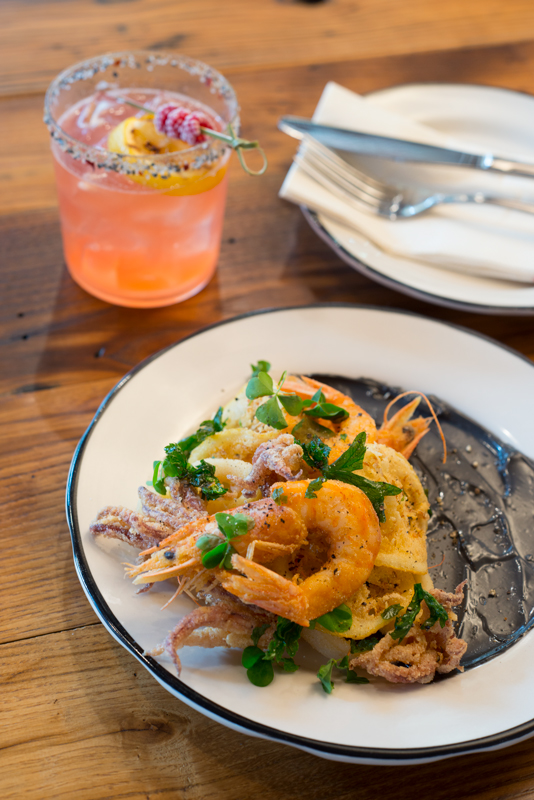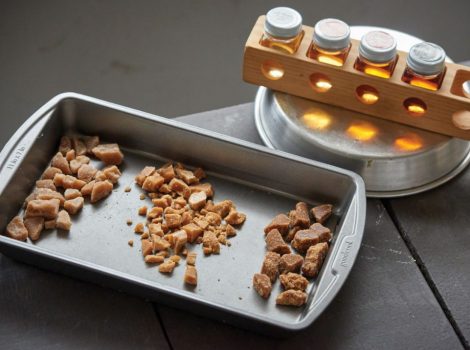Coffee Break
Originally featured in Lancaster County magazine.
At this time of the year, a hot cup of joe can warm the heart and soul in more ways than one.
Have you noticed that many of our day-to-day conversations center around food and drink? That extends across cultures, with coffee being among the most universal of topics. A simple cup of coffee can solve a problem, forge a friendship or provide us with a moment to relax. It’s a universal symbol of hospitality.
What follows are five coffee-brewing methods from across the globe that will help you up your entertaining game … or maybe solve a few of the world’s problems.
Why You Should Care
You can’t beat the convenience of a single-serve coffee maker for busy mornings and a break at the office. However, if you’re willing to put a little thought into your cup of joe, there is a massive trade-off in quality if you explore other methods. Think of it in terms of the time and care you invest in your cooking – by using healthier, higher-quality ingredients, you will ultimately take better care of yourself. As for brewing coffee, learning new methods takes time, but your efforts will certainly be well-rewarded. Plus, all of those single-serving pods won’t end up in a landfill!
The Magic Bean
Coffee beans vary in quality as well as flavor based on where they were grown, how dark or light they were roasted, and, of course, how fresh they are. How coarse or fine coffee beans are ground is another key to a better cup across specific brewing methods. If you have access to a coffee grinder, the method you choose will determine how you grind coffee beans.
Different brewing methods call for different coarseness in grounds, as well as different temperatures. The more precisely you can replicate water temperature, the freshness of the beans and how finely they are ground, the better your flavor will be. Fresh-ground coffee will always produce the best quality, and conical burr grinders yield arguably the most consistently sized grounds. They are more expensive, but they don’t have to be a significant investment. Your local grocery store or coffee roaster might have one that you can borrow, which is a great start.
Water is another element to consider; mineral content and temperature directly affect flavor. Water that’s heated at too high a temperature will burn coffee grounds, so if it reaches a boil, let it cool for a minute or two. If you have an electric kettle with a digital temperature setting, you’ll get more consistent results.
As much as I love coffee, I do try to limit my caffeine intake. It is an accelerant that can have a surprising effect on a multitude of biological systems. Filtered coffee is argued to help drinkers cut down on cholesterol. To get my coffee fix and keep caffeine in check, I prefer New Orleans style café au lait, which is half heated milk, half coffee.
As with cooking, consider brewing recipes as starting points. These are not hard and fast rules to live by. Where purists might recoil, if you prefer adding flavored creamers in a quality pour over coffee, I say go for it. This is about enhancing your experience and helping you share it with others. Simple syrup and condensed milk play well with iced coffee. Maple syrup, honey and agave can also be used. The Restaurant Store has a wide selection of syrups. All that said, a better brew can be dynamically layered, differing vastly from your Monday morning routine.
Your preferences will develop over time, and each method will bring out different characteristics of your favorite roast. Some methods are ideal for individuals, others in larger groups. Some take much more time than others, so you might favor one method before work, while another might be ideal for unexpected company one evening.
Method: French Press
Brewing Vessel: French Press
Time to Serve: 10 minutes
Difficulty: Easy
Grind: Coarse
Serve with: French beignets or donuts and powdered sugar for dipping
Get It Locally: Folklore Coffee & Company
Using a French Press is one of the easiest ways of quickly serving coffee to a group. The profile will be slightly oilier than a pour over coffee since the grounds are fully immersed in hot water. Naturally, the longer you let the coffee steep, the bolder it will be.
The Aero Press is another system for brewing that deserves a mention here. Similar to a French Press, it has a plunger that is pushed down, filtering coffee through greater pressure than a French Press.
Method: Pour Over Coffee
Brewing Vessel: Chemex or V60 Single Serve
with bonded filters and a gooseneck kettle
Time to Serve: 5 to 10 minutes
Difficulty: Intermediate
Coffee Grind: Coarse
Serve with: Breakfast or brunch
Get It Locally: Passenger Coffee, Square One, The Baker’s Table
Flavor characteristics: Low bitterness, the coffee self-filters in grounds for a less oily delight. You’ll likely notice more flavor depth in already familiar coffees with this brewing method. Start by saturating the grounds so that they “bloom” or expand and pause for a minute, thereby extracting more flavor with each subsequent pour over. Avoid pouring water down the sides to ensure the final product isn’t diluted. Chemex containers, while beautiful, are delicate and require handwashing. Available in a variety of sizes, the “button” on the glass side denotes the carafe is half full, and the bottom of the insulating wood color, which removes for cleaning (they’re expensive, so handle with care), denotes it’s full.
The V60 is a single cup solution that is made from either ceramic or plastic (it’s often dishwasher safe). It’s a simpler option for a quick, single-serving of pour over coffee. The Baker’s Table uses a V60 for all of its brews, and they’re superb.
Purists and connoisseurs will tell you that water and coffee grounds should be measured by weight in grams for a super-consistent pour across the board. The ratio is widely discussed. It can be a helpful guide using a Chemex to get the proportions right. A stainless-steel gooseneck kettle heats quickly and controls water during the pour for a consistent, even coffee extraction. It might seem unnecessary, but the pour-over process and quality results are notably improved.
Cold Brew
Time to Serve: 12-24 hours
Difficulty: Easy
Grind: Medium-coarse
Serve with: Iced lemon pound cake, fruit, chocolate chip cookies
Get It Locally: Starbucks at Belmont or Wegmans for nitrogen

Of the methods discussed here, cold brew coffee is the easiest, yet it requires the most amount of passive time. In preparing a cold brew, coffee grounds are never heated. Time is the main ingredient, as coffee grounds are steeped in cold water, removing all bitterness from the coffee for an unbelievably smooth drink.
This is different than iced coffee, which is usually brewed hot then added to ice. Here, cold water is added to the grounds and left to sit in the fridge for ideally 20 to 24 hours. A French Press can be used, although there are specialty devices available.
If you want to make large batches of cold brew coffee, I’ve used gallon jugs of water (three-quarters full) and funneled grounds in to fill the jug. Give it a shake to mix in the grounds and let sit in the fridge for use the next day. Fit a filter in a kitchen funnel, pour the coffee into another jug or growler, and you’re all set.
Starbucks has an amazing sweet cream cold brew coffee. Essentially, they blend salt, heavy whipping cream and sweetened syrups, the icing on the cake so to speak. For an even silkier experience, some shops serve cold brew coffee on nitrogen gas, just as a brewery might serve a stout. All I can say is brace yourself for the smoothest cold coffee experience of your life!
Be forewarned: Cold brew coffee has a high concentration of caffeine, so you might end up with the jitters after a (second) cup.
Vietnamese Iced Coffee
Brewing Vessel: Phin (metal filter)
Time to Serve: 5 to 10 minutes
Difficulty: Easy
Grind: Coarse to medium coarse
Serve with: Macarons
Get It Locally: Rice and Noodles, Sprout, Saigon Café
Brewing Vietnamese iced coffee can be super confusing if you’ve never done it before, but once you’ve experimented, it’s easy. The process has a beautiful element of showmanship that entails setting out a phin and a glass for each guest and letting them watch fresh coffee drip into a glass, perfectly layered over condensed milk. The trick is to stir the condensed milk in with the coffee once it’s brewed and then add or pour it over ice in a second glass.
There are no paper filters here, only a metal filter that is hand-tightened after adding grounds. The tighter you crank down on the plunger, the slower the process and stronger the brew. Too loose and the grounds will extract poorly for a weaker coffee. Later, as the ice melts in your mug, it gently dilutes the concentrated, sweetened coffee for a seemingly bottomless drink.
Similar to making simple syrup for iced coffee by slowly dissolving sugar and water in a saucepan, you can make your own condensed milk by combining roughly two cups of whole milk and 2/3 cup of sugar on medium heat for about 30-40 minutes (left undisturbed). When chilled, it will take on the consistency of syrup. Pour into a glass container and use within a week.
Espresso
Brewing Vessel: Moka Pot Espresso Maker
Time to Serve: 5 minutes
Difficulty: Advanced
Coffee Grind: Fine
Serve with: Fruit tart, cheese, vanilla ice cream or gelato (affogato)
Get It Locally: Mean Cup, Square One, Passenger Coffee, LUCA (affogato)
Of every method discussed, I have struggled the most with a Moka pot in getting a consistent extraction, probably due to the fact that we have an electric range. Heat is applied directly to the Moka pot, which means that consistent temperatures are achieved more easily on a gas range as opposed to a fluctuating electric stovetop. A larger Moka pot is great for entertaining guests, as a little espresso goes a long way.
I learned how to use a Moka pot from Chef Nino Elia, a local chef who is also an instructor at Zest! in Lititz. When it comes time to serve the espresso, he starts with the front-run of the coffee and mixes a small amount of
that with sugar. That gets whipped into a cream (similar to icing), dolloped on top as a finishing touch.
Find a Local Brew
If you want to taste-test coffee, Lancaster is lush with outstanding coffee shops. The Baker’s Table, Mean Cup, Square One, Passenger Coffee, among many others, serve pour over and cold brew coffees.

